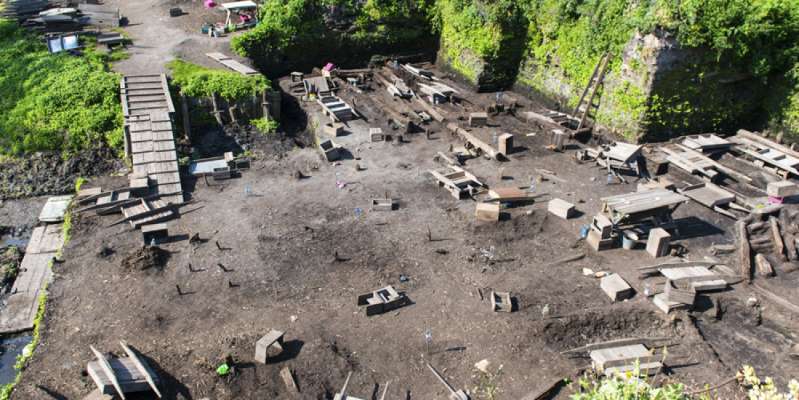
Pre-Columbus Venetian glass found in Alaska
In Alaska, during excavations, fragments of ancient Venetian glass were found. Research has shown that it entered the New World several decades before Columbus's expedition, according to American Antiquity.
The dark blueberry-sized beads were found at Punyic Point, a seasonal Inuit camp one and a half kilometers from Brooks Ridge. Archaeologists have carried out radiocarbon dating of the string to which they were attached and found that the ornament was made in the years 1440-1480.
Recall that Columbus arrived in America in 1492. The discovery shows that trade between Europe and North America may have begun even before this time.
The trade routes of that era remain unknown. But, according to scientists, the goods could travel through Europe, then along the Great Silk Road to China, from there through Siberia to reach the Bering Strait and cross to the other side, to the land of modern Alaska.
Punic Point could have been a popular stopover for traders, as there were many caribou (reindeer) nearby and trout swam in the rivers. During the excavations, quite a few historical artifacts were found there, and in addition to beads: copper bracelets, metal loops that could be earrings, and other metal parts that could be part of a necklace or bracelet.
Scholars theorized that the beads were likely unloaded at Shashalik, an ancient trading post north of present-day Kotzebue, and then transported further inland. Apparently, the owner threw or lost them, rather than deliberately buried them.
“This is the first documented case of the presence of European materials in prehistoric places in the Western Hemisphere, brought by land transport across the Eurasian continent,” the experts noted.
Earlier it was reported that the remains of a prehistoric settlement were found in the United States. It was located under the road junction.

